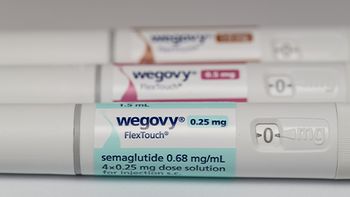
Biosimilars: what's in a name?
While FDA tries to referee the naming conventions for biosimilars, different factions of the healthcare system weigh in with conflicting priorities
This past week, New Jersey joined a growing list of states that have codified rules on how pharmacists can substitute a biosimilar for the original, branded biologic; in general, the rules specify that when a substitution (for an “interchangeable” product—more about that later) has been made, the pharmacist needs to report that back to the prescribing physician; and physicians can forbid a substitution by writing “dispense as written” or other language to that effect. This action follows two other biosimilar-prescribing practices that are being hotly debated: naming conventions for the biosimilars themselves; and reimbursement policies by CMS for federally funded pharmacy plans. All three of these issues have implications for how successfully biosimilars will compete in the marketplace, eventually, and while none of them speed more biosimilars onto the US market, collectively they will create the pathways and patterns for biosimilar prescribing going forward.
There appear to be three constituencies for biosimilar naming conventions: the originator biopharma companies, many of whom want to defend their franchises (generally referred to in this context as “reference” products) against biosimilars for as long as possible; the biosimilar manufacturers (some of which are also originators); and the payer community. A fourth constituency, arguably, is physicians, of whom many are not necessarily “for” the originator biopharmas, but are pretty unified in not wanting to be dictated to by payers.
At stake are the tens of billions of dollars payers hope to save by broad substitution of less expensive biosimilars for the reference products.
Naming convention
At the end of October, FDA closed the formal comment period for its proposed rule on naming convention (the proposed rule was
A couple days later, CMS issued a final rule specifying that all biosimilars of a reference product will be given the same Healthcare Common Procedure Coding System (HCPCS) code (commonly known as the “J” code)—with the implication that reimbursement for those biosimilars will be the same regardless of manufacturer. Reference products will have their own J code—so the originator biopharma companies skate on this issue. Somewhat surprisingly, though, biosimilar companies and industry representatives protested this decision: "It is unfortunate that CMS chose to ignore the strong reservations expressed by experts from all corners of the supply chain, leading biosimilar manufacturers and others urging the agency to provide non-interchangeable biosimilars with their own independent billing codes and payment calculations. This final rule is likely to discourage investment in biosimilar therapies, making it harder for patients to access these new products in the United States,” said Chip Davis, president and CEO of GPhA.
Hospira, a major biosimilar developer, commissioned a study from Moran Co. (Alexandria, VA) this summer on the subject; the study was critical of using the same billing code for all biosimilars. “Policymakers need to decide what objective they are trying to achieve. If the focus of policy is on minimizing Medicare reimbursement for new market entrants, then lump coding is the shortest route to that objective. But if the objective is to lower the total social cost of biologics over time, there is a strong case to be made that lump coding will prove counter-productive, by restricting competition against reference biologics.”
On the other side of the issue, the Healthcare Supply Chain Assn. (Washington, DC) is strongly supportive of CMS’ policy: “The market competition critical to lowering costs for biosimilars will occur when second or third biosimilar manufacturers enter the market and are included in the same J code as other biosimilar manufacturers for the same reference product. Given that private-market reimbursement often follows the same pathway as Medicare, the CMS reimbursement decision today will help create appropriate market pressure on manufacturers to lower prices.”
One implication of this lumped coding is that one biosimilar is more or less like another dovetails with the idea that no distinguishing suffixes are needed—but that is the opposite direction from where FDA would like to go with its naming convention. The Biosimilars Council, a division of the Generic Pharmaceutical Assn., is simultaneously against distinguishing biosimilar names, and against the lumped reimbursement, which sounds contradictory, except that it maintains that there are enough additional data elements, such as NDC codes, lot numbers and (eventually) serialized barcoding to enable a prescriber or payer to track identically named biosimilars from different manufacturers. (The catch here is that many hospital systems do not routinely record NDCs; they could, but that’s another burden on overworked hospital IT administrators dealing with a host of other issues now.)
Jeremy Schafer, a VP at Precision for Medicine (New York), agrees with the GPhA stance, saying that based on his prior experience at pharmacy benefit managers and as a consultant to payers, the payer community will find a way to track biosimilar sourcing, usage and reimbursement regardless of naming conventions or HCPCS codes. He cites the use of such drugs as immunoglobulins (which generally have the same nonproprietary name but are available from different suppliers). “Traceability is already possible,” he says, at least for major health systems that manage their own buying.
Another industry group, the Biosimilars Forum (Washington, DC) straddles the naming-convention debate. While it “takes no position on whether a suffix should be included in the U.S. proper name,” the Forum that “should the FDA go forward with the proposed addition of a suffix, (1) the suffix should be affixed to all biological products developed by a given company, and (2) the four letter suffix should be unique to the original product sponsor and meaningful, as opposed to random, and preferably derived from the company name. (The Biosimilars Forum represents several of the major biopharma companies developing biosimilars, such as Merck, Pfizer and Amgen; the Biosimilars Council represents several smaller biosimilars companies and some large generics manufacturers; however, Sandoz and Teva belong to both groups.)
Interchangeability
Woven into this debate is the concept of “interchangeability,” which is a guidance that FDA has issued previously. An “interchangeable” biosimilar is distinguished from a “highly similar” biosimilar by having additional testing performed to ensure that it functions more or less identically to the reference product. Originator companies have maintained all along that biosimilars should not be switched around willy-nilly, because of potential adverse events or efficacy questions arising from the less-than-exact duplication of a large biomolecule. By and large, however, the European countries’ system for introducing biosimilars—there are now about 20 available within the European Union—does not make this distinction. And, depending on who one speaks to, the experience there to date has not shown significant differences or unusual adverse events.
In the US, however, physician groups worry about the degree of biosimilarity. The Biologics Prescribers Collaborative, a grouping of a number of physician organizations, offered commentary to the FDA proposed rule in support of the four-letter extension of the nonproprietary name, but with the extension to provide an easily remembered manufacturer identifier. “The popular view is that the biosimilars introduced in Europe mostly function the same way, but our belief is that the subject has not been carefully studied,” says Dr. Dennis Cryer, head of the Collaborative. He says that his group (which brings together multiple other physician groups) have a primary concern for patient safety, and that biosimilars are “more likely” to be different from each other than not. Presuming that the four-letter extension is justified, he would like to see that extension refer more explicitly to the manufacturer. “The chances for error are high; it would be irresponsible to have a system where a typo could cause a medication error.”
Institutional problems
Comments provided by other organizations to the FDA naming rule highlight procedural or institutional problems with the name extension. The US Federal Trade Commission’s stance, against any extension, is most explicit about the economic and price-competition implications: “FTC staff is concerned that FDA’s proposal … could result in physicians incorrectly believing that biosimilars’ drug substances differ in clinically meaningful ways from their reference biologics’ drug substances, especially since differences in drug substance names have traditionally connoted meaningful differences in drug substances.6 A misperception that the drug substance in a biosimilar differs in clinically meaningful ways from that in the reference biologic could deter physicians from prescribing biosimilars, thus impeding the development of biosimilar markets and competition.”
Another concern comes from US Pharmacopeia (USP), which is the broadly recognized authoritative source of drug names and drugs’ composition. USP sees potential problems in signifying the differences between biosimilars that have been ruled to be interchangeable by FDA and the “highly similar” ones: “The nonproprietary naming system was intended to establish simple and scientifically useful names and has never been intended to convey regulatory status. Establishing nonproprietary names based on shifting regulatory expectations, as proposed by FDA in the Draft Guidance, could dilute well-established scientific principles and understanding of drug and biologic substances and products.”
Further, USP devotes considerable effort to harmonizing naming conventions globally, and the FDA’s proposal “could also create obstacles to global trade and harmonization, creating requirements that are viewed by other countries as an unfair restraint of trade, balkanizing national approaches, and making it more difficult to create globally interoperable systems.”
A deliberation parallel to FDA’s is going on at the World Health Organisation, where a policy of using a “biological qualifier” (BQ) would be used to identify biosimilars by source. This sounds a lot like FDA’s suffix concept; however, the WHO approach would not make the BQ part of the nonproprietary name of the biosimilar.
(Mention of USP and WHO brings up the question of how any sort of nonproprietary name is arrived at. By long practice, USP meets with the American Medical Assn. and the American Pharmacists Assn., and with “active participation” by FDA, as the US Adopted Names (USAN) Council; USP publishes the results. USAN and USP then coordinate with WHO, which sponsors the International Nonproprietary Names (INN) system. USP notes that INNs are often developed well before a new drug enters clinical trials.)
Yet another complication of biosimilars regulation is that a reference product can often have multiple indications. These indications were approved based on follow-on clinical trials performed by the originator company; should a biosimilar be approved for all those other indications based on its approval for the original indication? The answer is not at all clear at this point, given that getting the approval structure in place for one biosimilar for one indication is so entangled. To top that, when Sandoz sought approval of its filgrastim biosimilar, Zarxio, it conducted the conventional process of clinical trials (as if the drug were a new entity)—and won FDA approval. However, because this pathway does not fit with the prescribing and substitution practices being set up for biosimilars, it cannot be considered an “interchangeable” product at this point.
There are numerous drugs, as Precision for Medicine’s Schafer alludes to, that are already on the market with identical nonproprietary names; and that points to an eventual future direction of biosimilar dispensing: once the drugs are approved under any sort of FDA system, payers will go about dictating which drugs will be first-line therapies, and much of the time that will be based on cost.
Newsletter
Stay ahead in the life sciences industry with Pharmaceutical Commerce, the latest news, trends, and strategies in drug distribution, commercialization, and market access.




